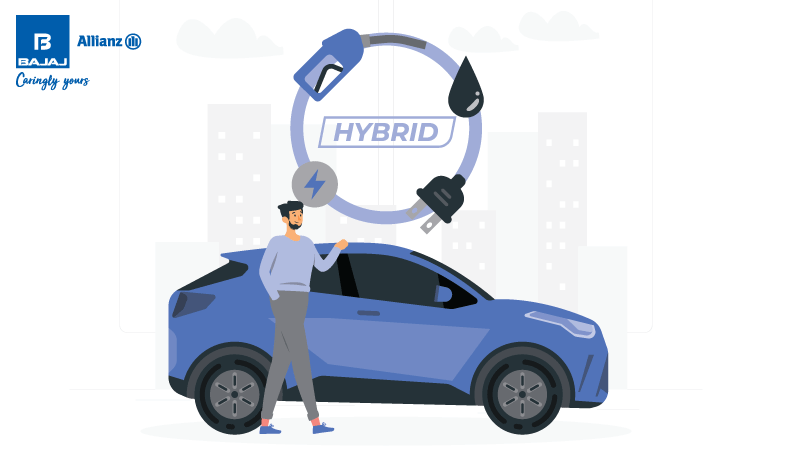In the world of automobiles, one crucial decision that often confuses prospective car buyers – is making the choice between manual, automatic, and continuously variable transmission (CVT) cars. Each transmission type comes with its own set of advantages and drawbacks, catering to different driving preferences and lifestyles.
Manual Transmission: Being Old School
The following reasons make manual transmission a popular mode of transmission:
The Thrill of Control
Driving enthusiasts often swear by the manual transmission for its unparalleled sense of control. For many drivers, shifting gears manually provides a direct connection with the engine, offering a more engaging and immersive driving experience. If your car has a manual transmission, an added benefit is the lower cost of your
car insurance policy due to lower maintenance.*
Fuel Efficiency
In the past, manual transmissions were considered more fuel-efficient than their automatic counterparts. By manually controlling the gear changes, you can optimize fuel consumption based on driving conditions. However, advancements in automatic and CVT technologies have narrowed this gap significantly in recent years.
Learning Curve
One drawback of manual transmissions is the learning curve associated with mastering the art of clutch control and gear shifting. Some drivers may find it challenging to adapt, especially in heavy traffic or hilly terrains. However, if you enjoy the learning process and appreciate the skill involved, manual transmission can be a rewarding mechanism.
Automatic Transmission: The New Convenience
Since its introduction, automatic transmission has become popular and one of the preferred modes of transmission for the following reasons:
Effortless Driving
Automatic transmissions have gained immense popularity due to their ease of use. With no clutch pedal to operate, drivers can enjoy a more relaxed and convenient driving experience. This is particularly advantageous in stop-and-go traffic, as there is no need to constantly engage and disengage the clutch.
Accessibility for All
Automatic transmissions are often preferred by individuals with physical limitations or those who simply prefer a more straightforward driving experience. The absence of a clutch pedal makes automatic cars more accessible to a wider range of drivers.
Smooth Transitions
Automatic transmissions excel in providing smooth and seamless gear changes. The gearbox automatically selects the optimal gear for the driving conditions, resulting in a more comfortable ride. This is particularly beneficial for those who prioritize a smooth and effortless driving experience over the manual control offered by traditional transmissions. One of the downsides of automatic transmission is the slightly increased cost of your
comprehensive car insurance when compared to manual transmission.*
CVT Transmission: Versatility Personified
Continuous Variable Transmission (CVT) is a transmission option that may although not be the first preference for many car buyers and users, but is a reliable option for car transmission due to the following reasons:
Continuous Power Delivery
CVT transmissions represent a middle ground between manual and automatic options. Unlike traditional automatic transmissions with a fixed number of gears, CVTs offer a continuous range of gear ratios, ensuring the engine operates at its most efficient level. This results in a smooth and consistent power delivery, enhancing fuel efficiency.
Adaptive Performance
CVTs are known for their adaptability to different driving conditions. Whether cruising on the highway or navigating city streets, a CVT adjusts its gear ratio to optimize performance. This flexibility can be advantageous if you are seeking a balance between the convenience of an automatic transmission and the efficiency of a manual one.
Improved Fuel Efficiency
One of the key benefits of CVT transmission is the potential for improved fuel efficiency. By continuously adjusting the gear ratio to match the driving conditions, a CVT can keep the engine operating in its most fuel-efficient range. This makes CVT cars an attractive option for eco-conscious drivers.
Making the Right Choice
Ultimately, the decision between a manual, automatic, or CVT car depends on your personal preferences, driving habits, and lifestyle. If you revel in the thrill of driving and enjoy the hands-on experience, a manual transmission might be the perfect fit. For those seeking convenience and a more relaxed driving experience, an automatic transmission could be the way to go. Meanwhile, the CVT offers a versatile compromise, providing a balance between efficiency and ease of use.
Whether you opt for the classic manual control, automatic convenience, or the adaptable CVT, choosing the right transmission type ensures an enjoyable and satisfying driving experience. To make the experience smoother, ensure that your new car is secured under the protection of insurance, which you can purchase with the help of a
car insurance calculator. The quotes offered by the calculator guide you in selecting the correct policy.
Conclusion
While you carry out your research on the type of transmission you want in your car, it might benefit you to also research the benefits of insurance for your car. If you already own a car with any one of the transmission types, ensure timely
car insurance renewal to enjoy uninterrupted coverage for your car.
*Standard T&C Apply
Insurance is the subject matter of solicitation. For more details on benefits, exclusions, limitations, terms, and conditions, please read the sales brochure/policy wording carefully before concluding a sale.
 Service Chat: +91 75072 45858
Service Chat: +91 75072 45858


